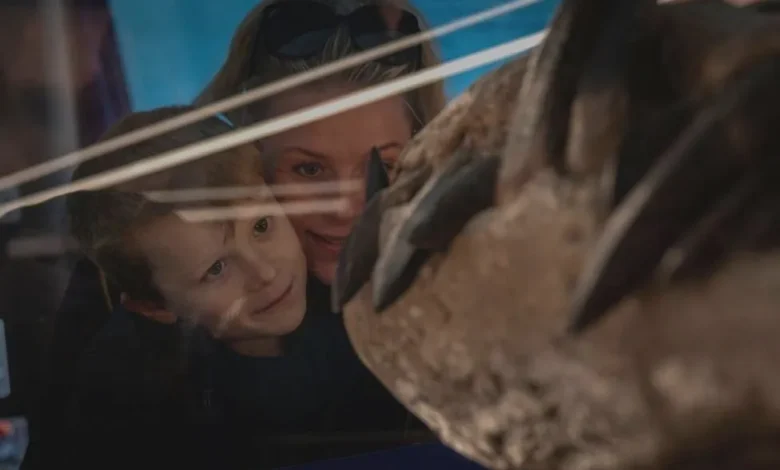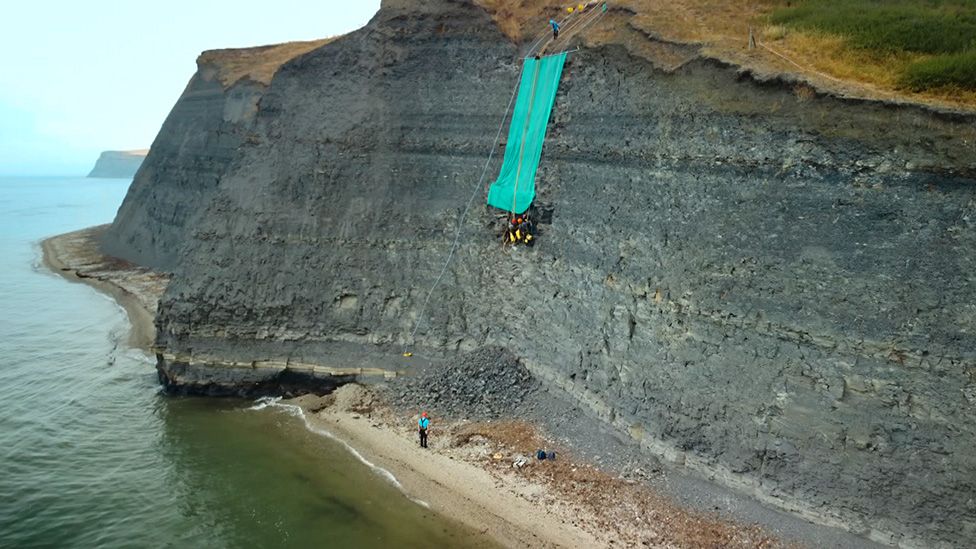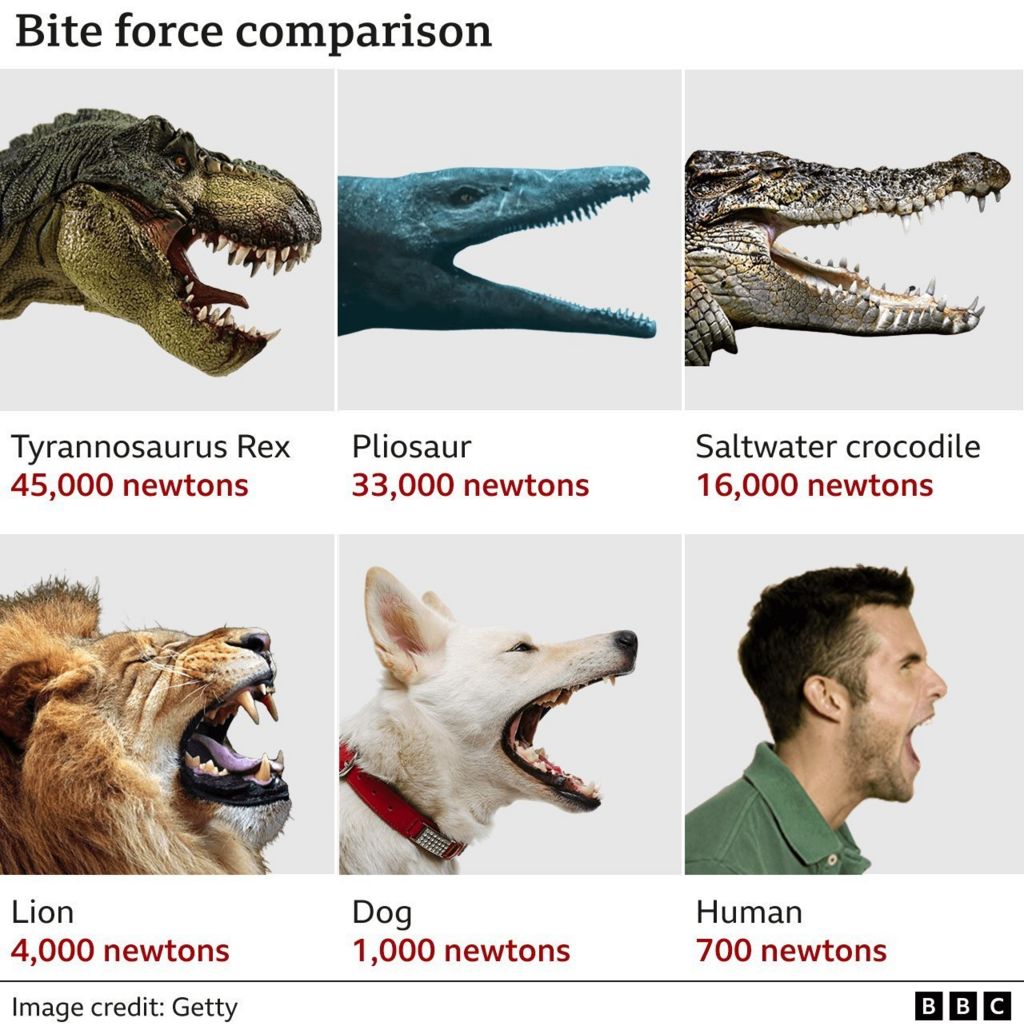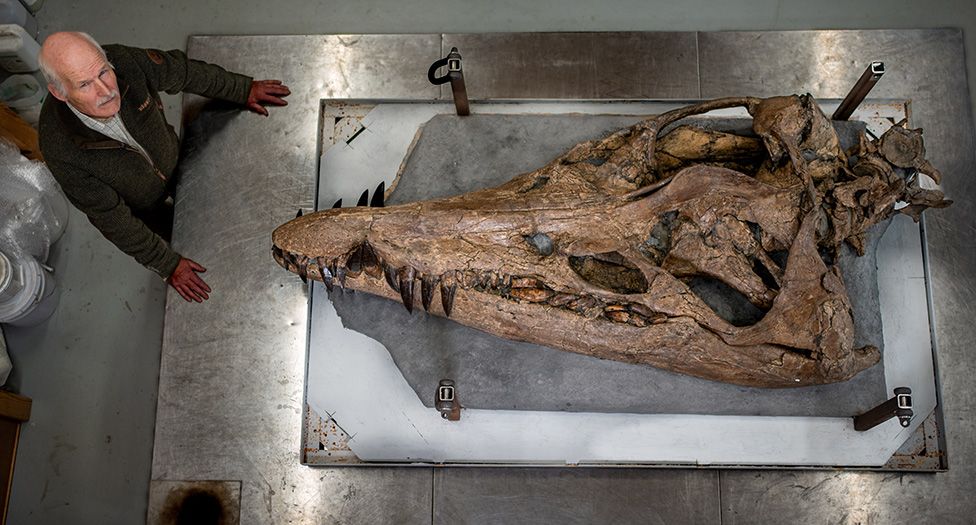Colossal pliosaur sea monster skull on display in Dorset

The skull of a colossal sea monster that was unearthed from the Jurassic Coast has gone on public display.
The 2m-long fossil belongs to a pliosaur – one of the most fearsome predators the planet has ever seen.
Sir David Attenborough investigated the discovery in a BBC film which aired on New Year’s Day.
The public can see the 150-million-year-old marine reptile at the Etches Collection in Kimmeridge in Dorset, close to where the beast was found.
The rest of its skeleton may still be entombed in the crumbling cliffs. The hope is it may eventually be recovered.

The snout of the pliosaur was discovered by a fossil enthusiast on a beach near Kimmeridge Bay.
The rest of its skull was extracted from half-way down a fast-eroding cliff face by a team precariously dangling from ropes.
Steve Etches led the effort to remove and prepare the fossil.
It’s now being unveiled at the museum that bears his name, sitting alongside the Jurassic fossils he’s spent a lifetime collecting.
“It’s going to be impressive, especially when children come, because they’ll come in and see it face-on – which should have the required effect,” he told BBC News.

The pliosaur skull is one of the most complete specimens ever found and it is exquisitely preserved.
It doesn’t take much imagination to see that this would have been the ultimate killing machine.
Its enormous crocodile-like jaw is packed with 130 razor sharp teeth, and cavernous holes on either side of the skull would have been filled with huge muscles.
Researchers estimate that its bite force would have been in the same range as a T. Rex – earning the pliosaur the nickname of “sea rex”.

Growing to 10-12m in length, the ancient reptile would have powered itself through the ocean using four huge paddle-like limbs.
So, despite its bulk, it would have moved quickly.
Passing prey would have been killed with a single bite, and then gulped straight down – scientists think this monster didn’t bother to chew its food.
“Pliosaurs were the top of the food chain,” said Steve Etches,

“They’d even feed on their own kind, because in the collections we’ve got pliosaur bones with pliosaur bite marks in them.”
As well as public interest in this prehistoric beast, researchers are also keen to get up close with the fossil.
It has features not seen on other pliosaurs, including a high head crest, which suggests it may be a species new to science.
And what about the rest of the pliosaur’s body?
If the skeleton is still in the Kimmeridge cliff clay, with the coastline rapidly eroding, it really is a race against time.
Steve Etches wants to get it out, before it’s lost to the sea forever.










